Rwanda travel guide: from gorilla trekking to fine dining
The African nation is known for gorilla trekking but it offers intrepid travellers so much more, including spiffy eco-lodges, dramatic landscapes and cool creatives.
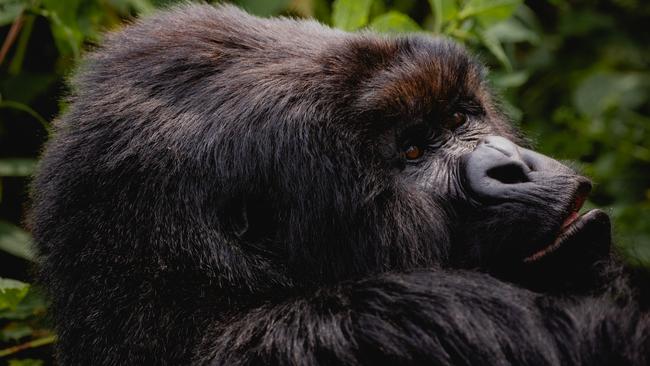
A rainbow greets us like a nationally orchestrated welcome as we drive early into Kigali, the morning sun burning off the aura of mist bringing boulevards of glossy leaves and flamevines into focus. The red helmets of motorbike taxis shine ahead like ladybirds cheerily pollinating a neat botanical garden. Spread shimmering at 1500 metres over Mounts Kigali and Jali, Rwanda’s young capital is dubbed the cleanest city in Africa. On pavements like pristine hides, there’s not a piece of litter. Single-use plastic containers and plastic bags are banned and each month the nation comes out in force to tidy villages and roadsides, a practice known as “Umuganda” (unity through common purpose). Only corrugated roofs flash like hundreds of shards of glass from the valley below. Beyond it lies the Albertine Rift, an almighty ruckle of biodiversity on the western border of this Bantu nation that’s barely a navel on the African map between the vast bellies of the Democratic Republic of the Congo (DRC), Uganda and Tanzania. Recently on these volcanic soils, new things have been sprouting: regenerating forests, sustainable architecture and lodges, farm-to-fork restaurants, design studios, community projects and start-ups. As gentle driver Moses shows us around, I start feeling giddy – less from the altitude than a contagious sense of optimism.

It’s nearly 30 years since the genocide of a million people for which Rwanda was formerly known, leaving 70 per cent of the population under 35 with names like Peace, Amiable and Placid and agaseke baskets with wizard-y tops as the national symbol of rewoven unity. After the efficient completion of 2000’s Vision 2020, a blue-sky sustainable development plan, Rwanda has transformed itself into the fastest-growing economy in Africa after Botswana, and one of the world’s most green-minded countries, with 37 per cent of its undulating land dedicated to rewilding projects. “What’s happened is a miracle,” stresses Moses. “It was like a man who couldn’t put food on his plate dreaming of buying a plane.” It’s now the continent’s most compact luxe wildlife destination with positive impact, known for rare primates that inhabit peaks of montane forests beneath swirling lenticular clouds. Four national parks – two of them UNESCO biosphere reserves, and a third, Nyungwe, due next year – can be circuited by helicopter in 40-minute hops.
-
Discover untapped and extraordinary destinations in the latest edition of Travel + Luxury magazine, available online and in print on Friday, 17 March.
-
Tightly woven into its own redemption story, the nation is also a participant in one of the world’s most uplifting conservation threads: the fight to protect the eastern mountain gorillas that live at high elevations on the Virunga massifs between Rwanda’s Volcanoes National Park and those in DRC and Uganda. Painstaking conservation efforts have brought the once critically endangered species back from the brink of extinction to become the only global great ape not in decline. And it’s only two hours’ drive to their home high in Northern Province. Cyclists defy the laws of physics peddling with sacks of potatoes the size of body bags as we ascend Mount Kigali, the sunlight strobing through eucalyptus where the city turns to slopes of matoke green bananas like dense wind farms. Women, with babies slung behind them like bustles, carry clay pots and hoes on their heads as gracefully as statement hats. They wave, calling “How are you?” in Kinyarwanda, a Bantu language of Ks, Zs, and Us, with long trains of words that roll as though over the “land of a thousand hills” before us. Veiled on the horizon, the slopes look just as gentle and hospitable, their tea plantations seemingly the spongy texture of moss.
-
“Here you visit gorillas as individuals, the cousins of rangers, trackers, farmers,” says conservation hero Prosper Uwingeli, chief warden of the national park. “We are all connected.”
-
Soon we’re in the misty agricultural communities of Musanze with fields of purple potato flowers and daisy-like pyrethrum (a natural insecticide) like rows of devotional offerings laid at the feet of the Virungas. Five of eight extinct volcanoes moodily dominate the horizon, silhouetted like the coned crowns of the silverbacks we have come to see close up. During 1994, when 1.5 million people were displaced, the hunted sought refuge in the bamboo beneath the fragile pink pompoms of dombeya trees high on these slopes, clearing what they found to subsist; the shrinking montane forest was roamed by poachers and Hutu insurgents from the Congo up to 2002. Now the only thing hiding in this soft nest of hazy green is a new generation of immersive eco-lodges opened just before the pandemic. Directly beneath the cloud-visored 3669-metre summit of Sabyinyo (aka old man’s teeth) is Singita Kwitonda, the Brutalist-inspired eight-suite lodge designed to One Planet Living protocol in local volcanic stone, bamboo fronds and fired bricks with the cocooning fire-lit ambience of an elemental spa adorned with glove-like chairs, hand-tooled totems and East African textile art. But the purpose here is all in the penetrating stare of silverback Charles in a portrait hanging over the bar fireplace like an ancestral painting. Glass walls make Kwitonda an effective observatory, its intimacy with these massifs reinforced in basalt blacks, ash and lava tones as though reflecting their smouldering cones.
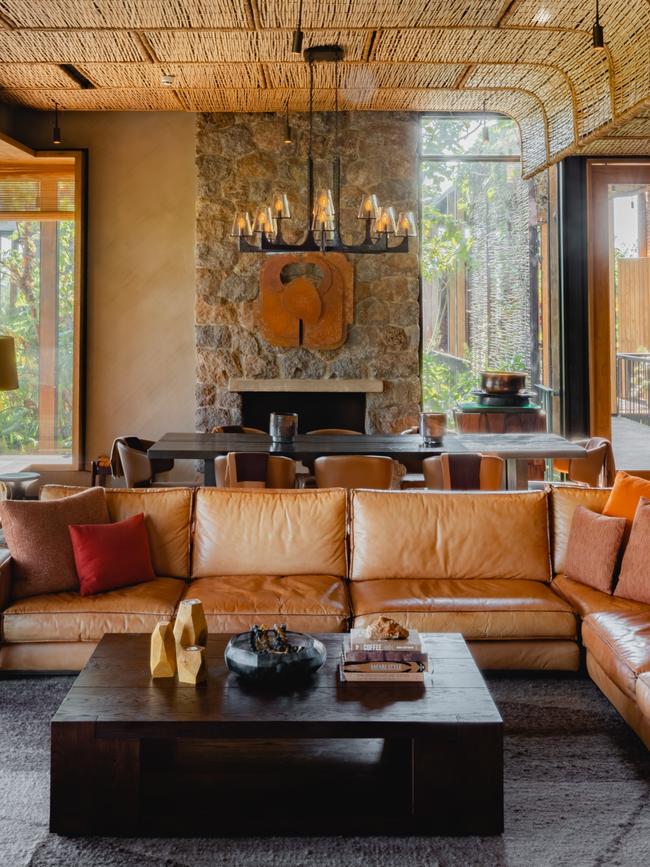
When Singita’s positive-impact safari pioneer Luke Bailes opened here in late 2019 with a five-phase reforestation plan, he bought up 72 hectares of unproductive farmland, creating the park’s first buffer zone. Kwitonda’s early phases completed, it’s now a role model for a new extension of the park. Today, the cluster of lodges disappear like a pride of lions in the bush, cushioned by African redwoods – the quarter of a million indigenous saplings planted in 2019. On rewilded meadowland, herds of buffalo graze like hulking mantlepieces with displays of ibis and herons. Elephants now descend here from the Congo. “We’ve rebuilt an ecosystem,” says Charles Nsabimana, the lodge’s conservationist, who began his career at the Dian Fossey Gorilla Fund in 1992, only seven years after the pioneering conservationist was murdered by poachers.

Nearby is the NGO’s first permanent campus, opened last year with a sustainable design by Kigali’s Mass studio. Its circular skylights echo the Saturn-like discs of cloud around Mounts Karisimbi and Bisoke between which Fossey founded her Karisoke camp in 1967 when gorilla numbers had dwindled to 230 (they now exceed a thousand). Hollywood has been enamoured of Fossey since 1988’s Gorillas in the Mist: the $US15 million science lab, education centre and world-class gallery was financed by The Ellen DeGeneres Fund. Still, it’s genuinely moving to see grainy pictures of her like an intrepid Jackie Kennedy in khakis. And immersive exhibits on gorilla science and climate change elevate everything to a symbolic conservation fight, a wider story of human redemption.
That evening, after we kit up in Kwitonda’s gear room, our sense of unfiltered proximity to the wild is teased when we walk back to our lodge before a horizon as flecked as tweed with buffalo herds to find one, a heavyweight, exhaling mist in our garden. At dawn Sabyinyo and Bisoke are balancing bundles of cloud as if on the way to Saturday market. Moses drives us to park headquarters in constant contact with rangers and they, in turn, trackers who monitor 10 habituated gorilla families out of a total of 23 in a militarily efficient human team of 160. We’re assigned to the Muhoza group, formed after headstrong silverback Marambo split from the Kwitonda family and won the hand of nine females. “He’s a great strategist,” chuckles our park guide, Felicien Uwiringiyimana. “When luring girlfriends, he left his family behind like he was a bachelor.” We set out towards Bisoke across ethereal moorland past plots of flowering sweet peas and climbing beans where boys carry long eucalyptus branches on their heads that sway as they walk like the trunks of baby elephants. The competition between man and beast for land has lessened. Ten per cent of the $US1,500 park entrance fee – double that of its Ugandan counterpart, funding conservation while limiting numbers – goes to local communities, so far creating 700 schools and cooperatives.
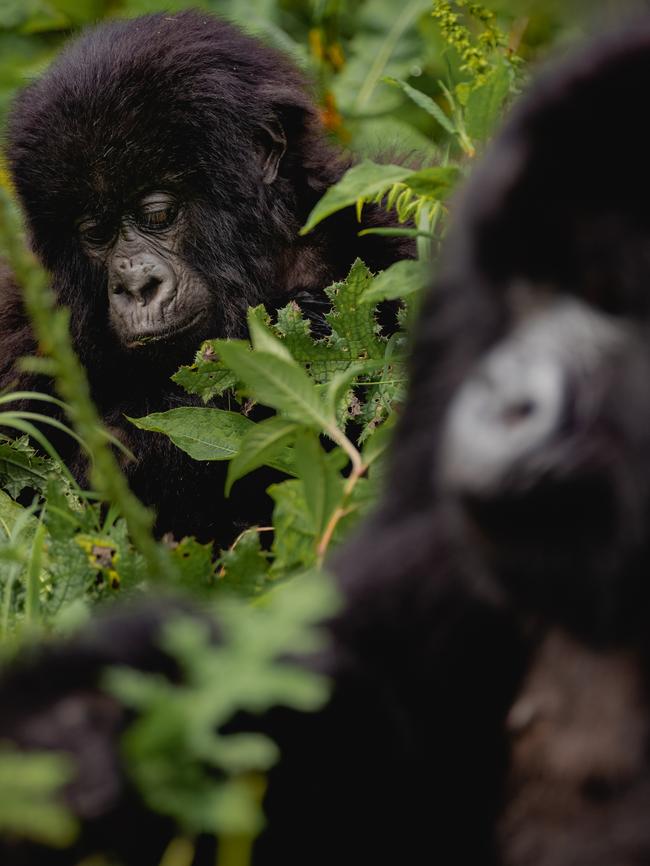
We enter the forest, wading through waist-height nettles and feathery ferns, stepping over trunks and elephant footprints, to meet our trackers – some erstwhile poachers – in a thicket, with whom we silently forge on through rainforest until we glimpse Marambo. He’s seated presidentially in profile, enveloped in a bush of yellow senecio flowers like the ornate border of a Rwandan coin, humming to himself as he choosily selects shoots. What at first seem black mounds of earth are another six members within three metres of us, picking blackberries from bushes with the dexterity their kin used to disable snares. Two juveniles clamber up a redwood with hanging grape-like blooms. One brother comically falls off backwards. Nine-month-old Isami, a goofy bundle of rumpled-bed fur, is piggybacked over to see Daddy, ending up on his back, distracted by his own purpled feet flailing in the air. We observe this intimate domestic scene for an hour, our presence as curious to them as grass, until a spat breaks out between two females. Marambo leaps up all brow and boxy torso on boxers’ fists, the pewter V on his back bulldozing through the bushes to sort it – his diehard allegiance to his family, like that of the humans around us, is deeply touching. “Here you visit gorillas as individuals, the cousins of rangers, trackers, farmers,” says conservation hero Prosper Uwingeli, chief warden of the national park. “We are all connected.”
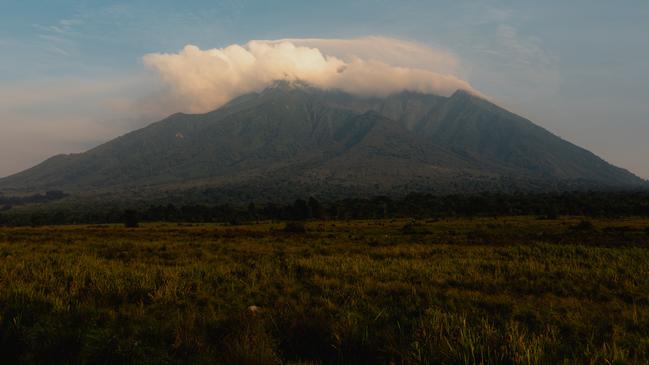
It’s the same air of healing and the attentiveness of the people cosseting us like a primate family at Kwitonda that make it such an exceptional retreat. Next morning, we hole up in window seats and steaming baths, looking out to Sabyinyo as muscular as a dragon’s foot in the sun, while guests scale its new hiking trail, or trek to see the ginger ruffs and daredevil leaps of golden monkeys. It’s also a pleasure to witness new talent blossoming here. Graduates of Singita’s culinary school, opened last year, will join the 19-strong team of local chefs who prepare plant-powered, petal-strewn comfort dishes with freshly plucked produce from the vegetable plots. At the new Akarabo Garden eatery, guests can pick their own ingredients or join the Umuganda by planting a forest sapling. Cape pinot noirs are chosen from the prestigious cellar by Minnie Mthombeni, one of Zimbabwe’s new generation of Black sommeliers. At One & Only Gorilla’s Nest, in a forest of spear-straight eucalyptus that seem to pierce the sky, Rwandan chef de cuisine Jonas Munyaneza also delves deep into local soils, repurposing matoke bananas, cassava, chilli-sized intoryi (aubergine) and tree tomatoes in modern sharing dishes, while Rwenzori double-collared sunbirds with the metallic shimmer of dragonflies flit about glorious tropical gardens. Nearby, pioneering Bisate Lodge, like six spider-spun agaseke baskets beneath Bisoke, is expanding. After opening Magashi Camp in the rewilded lion-strewn eastern savannahs, Zimbabwe’s eco-luxury safari brand is now planning a third project in Gishwati-Mukura, two newly joined national parks ring-fenced by UNESCO in 2020.
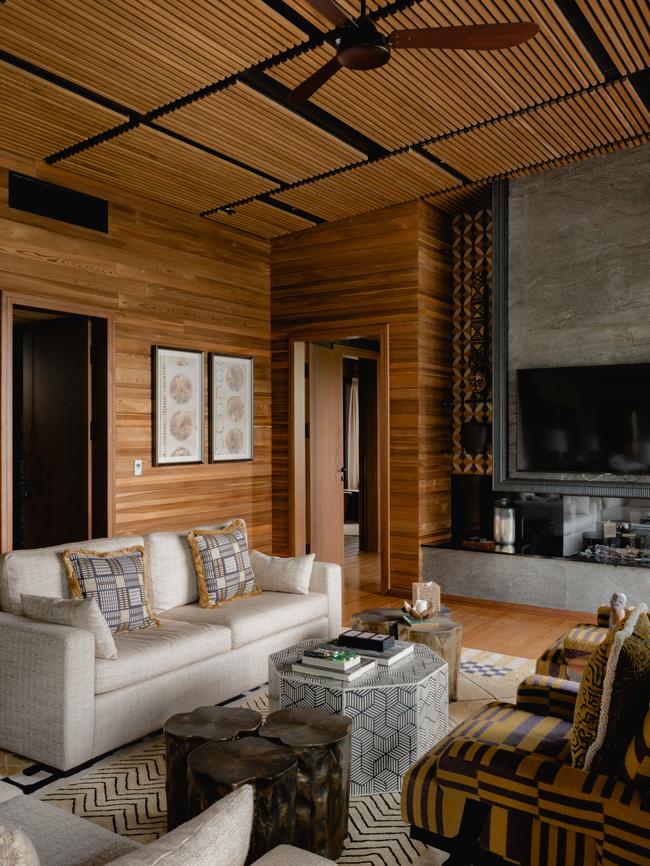

Thirty minutes south at the northern tip of Lake Kivu’s shores of inland beaches and garlanded palms, the new park is the site of a live battle led by NGO Forest of Hope to save the last one per cent of a former 100,000 hectares of habitat for endangered eastern chimpanzees, and golden and white-chinned L’Hoest’s monkeys. We stay at Forest of Hope’s two-bedroom guest house, a charming nest with home-cooked treats, accented like a colourful bird with kitenge batiks, that hovers above a radial expanse of forest – now increased to 4,000 hectares and 35 chimps in the process of being habituated. The dawn as gauzy as our mosquito nets, we descend to the forest with the NGO’s Thierry Inzirayineza, the hills before us stacked up like rain clouds to the top of the sky. Then we wade in with our trackers, toppling and clinging to trunks until the canopy finally tinges with tangerine light – the sun caught like a ball in the lofty arbours of a redwood between 10 aerial nests. Our presence triggers a ricochet of screaming. Then a wind-like sense of movement above us. We see only patches of fur until we spot Binoko. He’s picking at blooms like an old man eating popcorn, watching with curiosity the familiar faces below, their khakis stitched with the word “hope”.
-
The writer travelled as a guest of luxury travel specialist Red Savannah, with assistance from Visit Rwanda and Rwandair, which offers nine nights in Rwanda from $15,210, encompassing the three main national parks on a full-board basis, with all transfers and wildlife permits. Rwanda can be reached with Emirates and Rwandair. redsavannah.com; visitrwanda.com
-



To join the conversation, please log in. Don't have an account? Register
Join the conversation, you are commenting as Logout